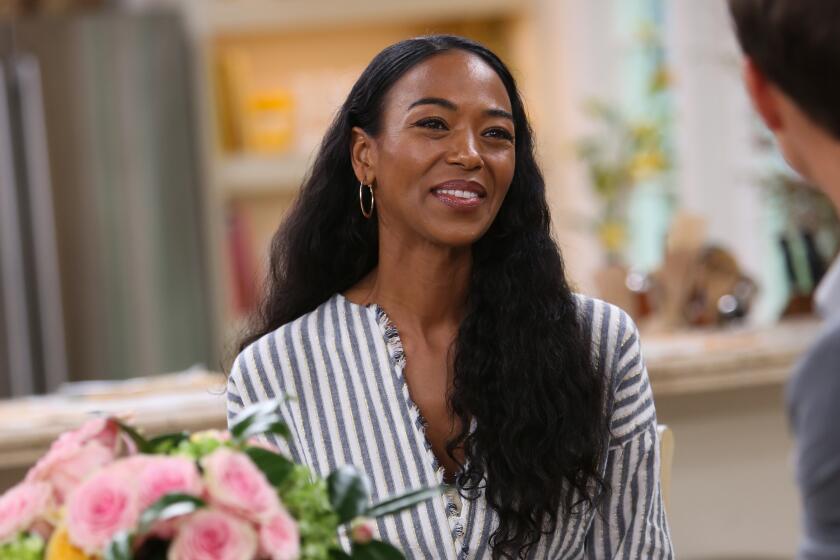Gerda Lerner dies at 92; pioneered field of women’s history
- Share via
Gerda Lerner spent her 18th birthday in a Nazi prison in Vienna and feared that birthday would be her last. Her jailers meant to starve her, but her cellmates — two gentile women imprisoned for their anti-fascist views — shared their rations and kept her strong.
“They taught me how to survive,” Lerner reflected decades later about the women who fed her until she was freed. “Everything I needed to get through the rest of my life I learned in jail in those six weeks.”
Her memories of oppression and the crucial bonds with other women shaped the life she created in America, where she became a leader of a new field of history.
“My craft and my profession are inseparable from the road I have come and the life I have led,” Lerner, a groundbreaking feminist historian credited with developing the nation’s first graduate program in women’s history, declared in “Why History Matters,” one of a dozen books she wrote or edited during a career male colleagues had predicted would fail.
Instead, Lerner became a driving force behind a new academic field. A pioneer of the women’s history courses taught in colleges and universities around the world, she died Jan. 2 in Madison, Wis., of natural causes, said her son, Dan Lerner. She was 92.
When Lerner entered college in her 40s to study history, she discovered a field that barely noticed her half of the human race. Forgotten or ignored were women like Christine de Pizan, a medieval author who was the first woman known to write for a living, and Gluckel of Hameln, who wrote one of the earliest first-person accounts of a German-Jewish woman’s life in the 17th century.
“I asked myself how this checked against my own life experience,” she told the Chicago Tribune in 1993. “‘This is garbage; this is not the world in which I have lived,’ I said.”
She set out to prove that women have a history, writing books that detailed their contributions and compiling diaries, letters and other original documents that have become vital resources for other scholars.
At Sarah Lawrence College, she established the first graduate program in women’s history in 1972. Later, at the University of Wisconsin-Madison, she spearheaded the creation of a doctoral program in the subject.
Lerner “more than anyone else enabled the flourishing of the field of women’s history,” said Stanford University professor Estelle B. Freedman, who studied with Lerner as a graduate student in the 1970s and co-founded Stanford’s feminist studies program. “She was the mover and the shaker who pushed the profession.”
A founding member of the National Organization for Women, Lerner inspired other women to become activists. “All of us in the field of women’s history have been affected by Gerda in some way,” said Molly MacGregor, co-founder and executive director of the Santa Rosa-based National Women’s History Project, who successfully lobbied Congress to recognize a national women’s history week (later expanded to a month) after attending a conference Lerner organized in 1977.
Gerda Hedwig Kronstein was born in Vienna on April 30, 1920. Her father, Robert, was a pharmacist and her mother, Ilona, a frustrated artist. As a teenager, Gerda took what she later described as one of her “first feminist actions” when, dismayed by Jewish women’s exclusion from full participation in the synagogue, she refused a bat mitzvah. But she could not escape her Jewish identity.
When Germany annexed Austria in 1938, the Gestapo took her and her mother into custody for six weeks. “It was the most important experience of my life, because I didn’t think that I was going to come out alive,” she said in the Chicago Tribune interview.
Her father, who had escaped to Lichtenstein, traded his Austrian assets for their release. Lerner immigrated to America in 1939 and was married, but it was a poor match that quickly ended in divorce.
In 1941 she married Carl Lerner, a theater director and communist. She joined him in left-wing activities, helping to unionize the film industry and agitating for racial equality. He weathered persecution during the McCarthy era to become a successful editor on films like “12 Angry Men,” “Requiem for a Heavyweight” and “Klute.” He also directed “Black Like Me,” a 1964 film he and Lerner adapted from a book about a white journalist’s experiences posing as a black man in the South.
After her youngest child turned 16, Lerner resumed her education. In 1963 she earned a bachelor’s degree in history at the New School for Social Research in New York, followed by a master’s in 1965 and a doctorate in 1966 from Columbia University. Her dissertation about Sarah and Angelina Grimke, the American abolitionists and suffragists, was published in 1967 as “The Grimke Sisters from South Carolina: Rebels Against Slavery” and is still assigned in college courses.
Lerner taught at Sarah Lawrence from 1968 to 1980, when she moved to the University of Wisconsin-Madison as Robinson-Edwards Professor of History. In 1981 she became the first woman in 50 years to serve as president of the Organization of American Historians.
Among her major works are “Black Women in White America” (1972), a documentary collection that became a standard text in women’s history, and “Women and History,” a sweeping two-volume examination of gender inequality published by Oxford University Press in 1986 and 1993.
She also wrote “Fireweed” (2002), a political autobiography that broke decades of silence about her activities in the Communist Party (she later renounced her membership); and “A Death of One’s Own” (1978), a moving account of her husband’s battle with brain cancer. Carl Lerner died in 1973.
In addition to her son Dan of Cornell, Calif., she is survived by a daughter, Stephanie, of Chapel Hill, N.C.; a sister, Nora Kronstein, of Tel Aviv; and four grandchildren.
Lerner received 14 honorary degrees over the years but was uncomfortable with the ceremonial hoods that came with them — symbols, she said, of “the millennium of exclusion of women from universities.”
It took her a year to rip the hoods apart. “I wanted to change this patriarchal symbol into an art object,” she said, and turned the scraps of satiny fabric into a colorful quilt, which she mounted on her living room wall.
More to Read
Start your day right
Sign up for Essential California for the L.A. Times biggest news, features and recommendations in your inbox six days a week.
You may occasionally receive promotional content from the Los Angeles Times.








